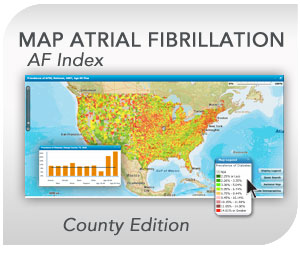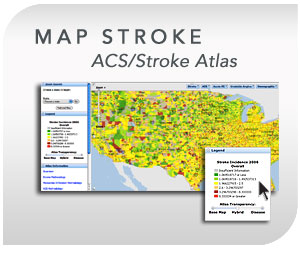Stroke Reports
Monday, October 21st, 2013

STROKEAHA: October 17, 2013 Effect on Short-term and Long-term Outcomes Background and Purpose—Poststroke infections (PSIs) worsen the outcome in acute ischemic stroke, but the effect of preceding infection (PI) is controversial. Data on young patients are scarce. We characterized PI and PSI in young adults with first-ever stroke and studied whether they are associated with 3-month […]
Stroke Reports
Monday, October 21st, 2013

STROKEAHA: October 17, 2013 Background and Purpose—Early vascular events are an important cause of morbidity and mortality in the first 3 months after a stroke. We aimed to investigate the effects of MLC601 on the occurrence of early vascular events within 3 months of stroke onset. Methods—Post hoc analysis was performed on data from subjects included […]
Stroke Reports
Monday, October 21st, 2013

STROKEAHA: October 15, 2013 Background and Purpose—Adequate diagnosis of atrial fibrillation (AF), including paroxysmal AF, is an important part of stroke workup. Prolonged ECG monitoring may improve the detection of paroxysmal, previously undiagnosed AF (unknown AF). Therefore, we evaluated systematic 72-hour Holter ECG monitoring to detect unknown AF for the workup of patients with stroke. Methods—Unselected […]
Stroke Reports
Monday, October 21st, 2013

J Am Heart Assoc.: October 14, 2013 Background Hospital certification and recognition programs represent 2 independent but commonly used systems to distinguish hospitals, yet they have not been directly compared. This study assessed acute ischemic stroke quality of care measure conformity by hospitals receiving Primary Stroke Center (PSC) certification and those receiving the American Heart Association’s Get […]
Stroke Reports
Monday, October 21st, 2013

J NeuroIntervent Surg: 10/11/13 Objective Immune dysregulation influences outcome following acute ischemic stroke (AIS). Admission white blood cell (WBC) counts are routinely obtained, making the neutrophil–lymphocyte ratio (NLR) a readily available biomarker of the immune response to stroke. This study sought to identify the relationship between NLR and 90 day AIS outcome. Methods A retrospective analysis was performed on […]
Stroke Reports
Thursday, October 10th, 2013

STROKEAHA: October 8, 2013 Background and Purpose—Thin-section noncontrast computed tomography images can be used to measure hyperdense clot length in acute ischemic stroke. Clots ≥8 mm have a very low probability of intravenous tissue-type plasminogen activator recanalization and hence may benefit from a bridging intra-arterial approach. To understand the prevalence of such clots, we sought to […]
Stroke Reports
Thursday, October 10th, 2013

PLOS ONE: 10/4/13 Good reliability of methods to assess the extent of ischemia in acute stroke is important for implementation in clinical practice, especially between observers with varying experience. Our aim was to determine inter- and intra-observer reliability of the 1/3 middle cerebral artery (MCA) rule and the Alberta Stroke Program Early CT Score (ASPECTS) for […]
Stroke Reports
Thursday, October 10th, 2013

Neurology: October 4, 2013 Results: Among 240 patients treated with IV TPA, 174 had serologic testing for CD available. Of those, 24 patients (13.8%) had positive serology for CD. Patients with CD more frequently had heart failure (45.8% vs 14.7%; p < 0.01) and higher admission NIH Stroke Scale scores (19 [15–21] vs 13 [8–19]; p < 0.01) than patients […]
Stroke Reports
Thursday, October 10th, 2013

JACC: October 2013 Objectives Analyze the impact of dabigatran plasma concentrations, patient demographics and ASA use on frequencies of ischemic strokes/systemic emboli and major bleeds in atrial fibrillation patients . Background The efficacy and safety of dabigatran etexilate were demonstrated in the RE-LY trial, but a therapeutic concentration range has not been defined. Methods In a prespecified analysis […]
Stroke Reports
Friday, October 4th, 2013

STROKEAHA: October 3, 2013 Background and Purpose—The European Cooperative Acute Stroke Study (ECASS) III showed benefit of intravenous tissue-type plasminogen activator for acute ischemic stroke 3 to 4.5 hours from onset in selected patients from Europe, with this extended treatment subsequently recommended by the American Stroke Association. We prospectively enrolled patients with acute ischemic stroke treated […]




































